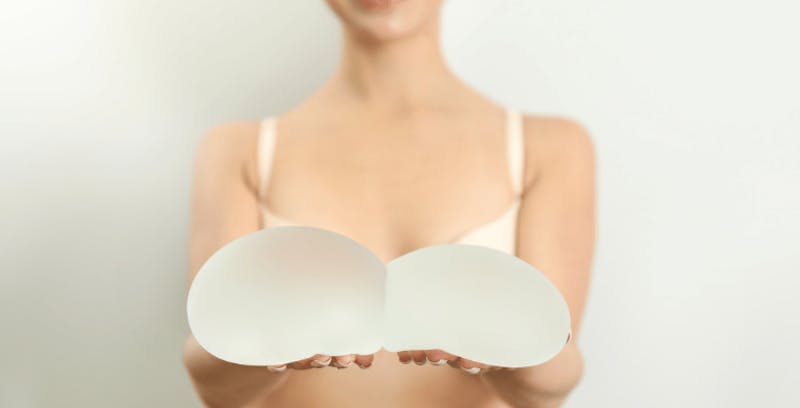
Breast augmentation is a cosmetic procedure that has helped countless women feel more confident and beautiful in their own skin. The procedure involves using implants to enhance the breasts’ size, shape, and contour, providing a more proportional and aesthetically pleasing appearance. Despite its popularity, the procedure can be intimidating and confusing for many. With so many questions about the procedure, the recovery process, and the results, it can be challenging to make an informed decision about undergoing breast augmentation. This procedure isn’t for everyone and can’t be performed by just anyone. If you’re looking for information about breast augmentation, this breast augmentation FAQ guide can help you feel more informed and confident about the procedure, whether you’re considering it for the first time or are an experienced patient.
- No One-Size-Fits-All
It’s easy to assume that everyone walking into the plastic surgeon’s office hopes to go from an A to a DD, but that’s not the case. No one size fits all bodies, and that includes yours. Some people want to see only a minor increase in breast size, and others want a much more significant change. One of the biggest deciding factors is your body size and what would work with your proportions. While some people would like a noticeable increase, many want something that will still fit with their current body size.
The most important part is that the decision is made by the individual receiving the implants and is the right size for them. Your plastic surgeon can consult on the sizing and help you determine some options that may fit well, but ultimately it is up to you and what you want for your body.
- Saline VS Silicone
There are two main kinds of implants used today. Saline breast implants are filled with a sterile saltwater solution and have a silicone shell. Some women find that saline implants can feel less natural than silicone implants, and they are also more prone to rippling, which can be visible through the skin.
Silicone breast implants, on the other hand, are filled with a silicone gel that feels more similar to natural breast tissue. They are also less likely to ripple and look more natural and less noticeable under clothing. Additionally, a ruptured silicone implant can be more difficult to detect than a ruptured saline implant and may require more extensive testing and imaging to confirm the rupture.
Most surgeons use silicone because of the natural feel and appearance. However, both options are safe and accomplish the goal of augmentation. The choice will depend on what will work best to reach your goal.
- Not All Doctors
While many regulations are in place to ensure that licensed plastic surgeons are properly trained, not all will have the level of experience you may want. Many specialize in certain procedures and may be better at other techniques. People tend to assume any plastic surgeon can perform any procedure. But if you want specific results, you want someone with experience in that procedure. When looking for a plastic surgeon, be sure to consult and learn about what they specialize in. Have they performed this procedure often enough for you to feel comfortable with their expertise?
It’s essential to see a plastic surgeon you are comfortable with. This allows you to be honest about how you want to look and feel. Consider how you feel from the waiting room to the exam room. Are you at ease and looking forward to learning how your body could look after the procedure? Does the plastic surgeon seem upfront and genuine when sharing thoughts and their experience in the area? If you make sure you are working with a licensed surgeon with a reputable practice who you feel comfortable with, you should be able to achieve the right results.
- The Level of Longevity
Are breast implants permanent? Typically breast implants do not last a lifetime. At some point, you may need to replace or remove the implants. The longevity of breast implants can vary greatly depending on several factors, including the type of implant, placement, and the patient’s health and lifestyle.
Saline breast implants typically have a lifespan of 10 to 15 years, while silicone implants may last for 20 years or more. However, these are just general estimates, and some women may need to replace their implants earlier or later, depending on their individual circumstances. In some cases, a breast implant may leak or rupture, requiring replacement or removal. Some manufacturers will help pay for replacements if there is a complication earlier than anticipated. Many people expect implants to last around 15 years before needing replacements.
Speaking with your plastic surgeon is the best way to learn how long possible implants will last for you and what the process of replacing them may look like.
- Pain In Post
Some people expect no pain after procedures, and some expect bed rest for weeks after. While breast augmentation is a major surgical procedure, knowing what to expect can help you recover more effectively and allow you to prepare properly before the procedure.
It’s normal to experience some pain and discomfort after breast augmentation. The amount of pain you may feel will vary depending on several factors, including your pain tolerance, the size and placement of the implants, and the type of procedure performed.
Immediately after the procedure, you may experience some pain and discomfort in the breast and chest area. This can be managed with pain medication prescribed by your doctor and should subside within a few days. Some women may also experience swelling and tenderness in the breast area, which can last for several weeks after the procedure.
Recovery from breast augmentation is a gradual process, and you may be unable to return to normal activities immediately after the procedure. You may need to limit physical activity and avoid heavy lifting for several weeks after the procedure to allow your body to heal properly. Your doctor can provide specific guidelines to help you manage pain and discomfort and ensure a smooth recovery.
- Nipple Sensation
Many people worry about changes in sensations after breast augmentation, especially around the nipples. Sensory changes in the nipple-areolar complex can occur after breast augmentation surgery, but these are typically temporary. Research has suggested that there may be an increased likelihood of these changes when implants are inserted with a peri-areolar approach or require incisions near the nipple. However, it’s important to note that most sensory changes tend to improve over time. Permanent loss of nipple sensation is rare.
- Breastfeeding Facts
A constant question regarding breast augmentation is whether or not breastfeeding is an option post-surgery. Plenty of women breastfeed after undergoing breast augmentation with no issues. However, some steps could help limit the risk of any issues. Placing the breast implant under the muscle, as opposed to above, can minimize the distortion of the glandular tissue and ducts, thus reducing the chances of having difficulties breastfeeding later on. Speak with your doctor if you want to ensure you have no problems breastfeeding later.
- Possible Complications
As with any major surgery, there are possible complications associated with breast augmentation. While the surgery is common and safe, there are risks when undergoing a medical procedure. Knowing these will help you make the right decisions for your body and prepare in case of a different outcome. Some of the most common complications associated with breast augmentation include implant rupture, capsular contracture, infection, and asymmetry. Speaking with your plastic surgeon about possible complications can prepare you and ensure you know all the facts before undergoing breast augmentation.
- Changes Over Time
While implants last many years, their appearance can change over time due to various factors such as aging, weight fluctuations, and pregnancy. As a result, the breasts may begin to look and feel different than they did immediately after the surgery.
One common change that can occur over time is a gradual decrease in breast firmness due to natural aging and gravity. This can cause the implants to droop or sag, leading to changes in the shape and appearance of the breasts. Like all body parts, age and other factors can change appearance, and understanding this will help you adjust your expectations and prepare for the future. Plastic surgery, in general, will last longer if you maintain a healthy lifestyle, and that includes breast augmentation.
- Satisfaction Guaranteed?
People tend to have skewed beliefs about how breast augmentation patients feel afterward. The majority of patients receiving breast augmentation are pleased with the results. Women who have realistic expectations and understand the risks and potential complications of the procedure tend to be more satisfied. Learning about the procedure and how your body will look and feel after it is important to ensure positive results. Your specific goals may be attainable, but only by working with your surgeon and making the best decision for you and your body.
Best For Your Body
If you want to undergo breast augmentation, review all the above information and consult a licensed plastic surgeon. If you understand all of the facts and how your body will and can change, you should be able to achieve your desired goals. Undergoing surgery like breast augmentation is an expensive and often lasting decision. But if you learn all you can and know what to expect, there is no reason why you shouldn’t end up with results you love.
Whether you are only beginning to consider a breast augmentation or are ready to make the call, make sure you find a surgeon you can trust. A licensed plastic surgeon with plenty of experience, like Dr. Leif Rogers, MD, can help you understand your options and what to expect. If you’re interested in learning more about possible procedures, reach out today and schedule a consultation to get started.


